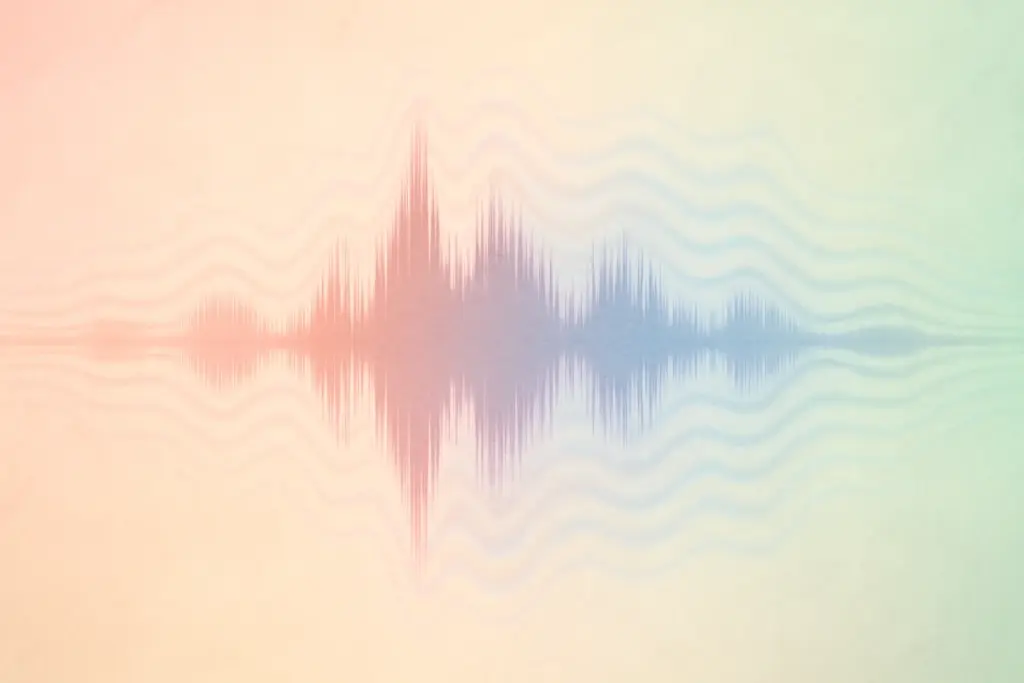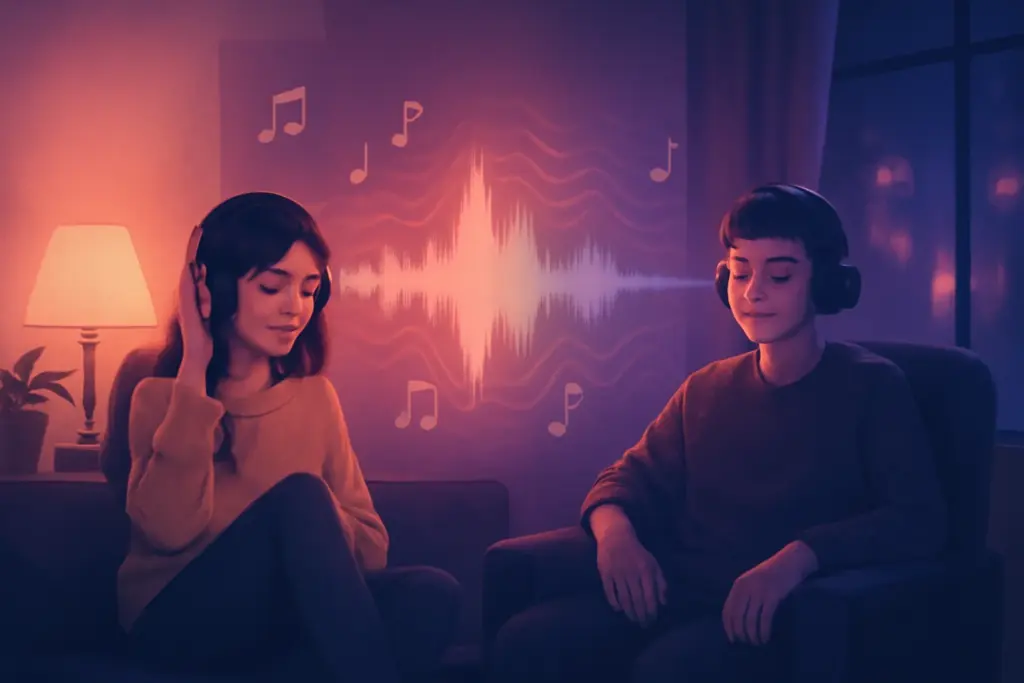A sigh, a summer night, digital rain falling behind an anime cityscape, and somewhere in the background, your favorite pop song—now syrupy, hypnotic, transformed. Welcome to the world of slowed and reverb, the unofficial sonic backdrop of Gen Z’s internet age. Like lo-fi hip-hop before it, this simple yet compelling remix technique—slowing down tracks and adding thick waves of reverb—has spawned a vast online culture.
On YouTube and TikTok, millions seek comfort and nostalgia in these warped versions of familiar tunes. But slowed and reverb isn’t just an audio filter—it’s a mood, a rebellion against the algorithmic pace of modern life, and (for better or worse) a symbol of how a generation grapples with anxiety, connection, and wistful longing.
In this blog post, we explore the slowed and reverb aesthetic, its roots, why Gen Z made it their own, what makes it different from classic lo-fi, and voices from the front lines—Redditors sharing their unfiltered love, hate, and ambivalence for the trend.
What Is Slowed and Reverb?
At its heart, slowed and reverb is almost laughably simple: take a song, reduce its tempo (usually 10%-25% slower), add digital reverb so every beat and syllable echoes, and you have a genre-bending remix that feels familiar, yet completely new. But in practice, it creates an atmosphere that’s dense, dreamy, and emotionally charged.

Lo-fi’s popularity paved the way—lo-fi hip-hop’s warm imperfections and study-friendly beats have been Gen Z’s safe space for years. Slowed and reverb, though, lands differently; it turns any song—pop, R&B, EDM, or even Bollywood hits—into pure mood.
The Evolution: Chopped, Screwed, and Lo-Fi DNA
Slowed and reverb owes much to DJ Screw’s 1990s Houston “chopped and screwed” scene, which slowed hip-hop tracks to syrupy tempos for late-night, blunted vibes. But where chopped and screwed brought skipping beats and record scratches, slowed and reverb keeps it minimal: slow down, soak in reverb, loop some visuals.
Slowed and reverb’s moment arrived in the late 2010s, but it exploded with lockdowns: stuck at home, Gen Z sought comfort in “false nostalgia”—nostalgic vibes for moments you might never have lived. As one slowed-reverb creator put it, “People might be very bored or sad during lockdown because their freedom is limited. They find their escape in slowed songs which make you relax and get your mind off bad things.”
Why Gen Z Needed a New Aesthetic
Why does Gen Z gravitate toward slowed and reverb? After years of hyper-polished digital life, the pitch-perfect lifestyle, and relentless content churn, this generation is hungry for imperfection, slowness, and emotional depth.
- Nostalgia for a Past Never Lived: Slowed and reverb is a ticket to places only imagined—slow parties, night drives, teen heartbreaks.
- Mental Health & Escapism: Over 86% of Gen Z says audio (music, lo-fi, slowed and reverb) helps their mood. It’s the new therapy—sometimes more effective than friends or even actual therapy.
- Accessibility: Anyone can make these tracks at home with free software, giving digital natives a way to remix culture on their terms.
How Slowed and Reverb Sounds & Feels
Imagine Billie Eilish or Travis Scott, but melting into your headphones. The slowed tempo and reverb create a cocoon:
- Melancholy and Comfort: The effect invites listeners to lean in, catch every lyric, and feel the weight of each note.
- False Nostalgia: Even tracks meant for clubs turn into ballads for empty rooms and poetic longing.
Reddit Speaks:
“After listening to ‘Home – Resonance’ slowed, I get serious melancholic, nostalgic and an almost lamenting sort of feel. Not only that, you can really hear each note mix with another and each texture of the song complimenting each other.”
— Redditor
“Slowed and reverbed songs are great. I like music that’s been remixed, slowed down, reversed, sped up, mashed with other music, or Lofi’d… it’s all good to me.”
— Redditor
Community Voices: Redditors Speak
Reddit offers a raw, unfiltered window into the slowed and reverb phenomenon:
- Fans:
“At least in my experiences it really opens up the song to be listened to in a new way… allowing you to really appreciate the composition of it that you might miss on the original.” - Critics:
“I really can’t stand tracks that have been drastically altered in pitch and speed! It feels like a lazy way to grab attention, and even as a member of Gen-Z, I find it really annoying!” - Moving Stories:
On slowed and reverb YouTube videos, people often confess heartbreak, loneliness, or simply vent their feelings in the comments. The slowed-down music becomes a safe space for vulnerability and connection.
Some musicians on Reddit see slowed and reverb as “tapping into nostalgia—unless you’ve had the experience of mistakenly playing your 45 RPM records at 33 1/3, who really feels nostalgic about this?” Others express frustration when their original work is overshadowed by these remixes. Still, for many, it’s a way for young producers to get heard and build community.
The Internet’s Soundtrack: Data & Trends
Table 1: Slowed and Reverb by the Numbers
Streaming Habits & Demographics
- Gen Z averages 4+ hours of audio a day, and genres like lo-fi, slowed and reverb, and bedroom pop are major players in their daily playlists. 67% use music as “an escape plan” and 61% credit it with mental health boosts.
- Discovery is social: 30% find new tracks on social media, while friends/family are still tastemakers—sometimes even sharing “slowed + reverb” versions of 2000s Nickelback “for the aesthetic.”
The Nostalgia Paradox

Why are so many Gen Zers obsessed with slow? The deeper question is why they’re so fixated on nostalgia for times they never knew. The answer lies in the burnout and anxiety culture teens and young adults face today.
- Escape from Digital Overwhelm: For a group raised on “always on” digital culture, slowed and reverb delivers intentional slowness.
- Desire for Imperfection: Gen Z actively seeks “realness, imperfections, and relatability”—a direct reaction to algorithm-driven, hyper-curated feeds.
- Retro Tech, Cottagecore, and Lo-Fi: The slowed and reverb trend aligns with a rise in retro tech, vintage vibes, and even “slow living” subcultures. Nostalgia isn’t just about music—it’s a lifestyle.
Criticisms & Controversies
Not everyone is enchanted by the slowed and reverb aesthetic:
- Claims of Laziness: Some musicians and listeners on Reddit claim it’s “aimed at individuals lacking creativity who merely slow down and add reverb… for online fame”.
- Copyright Issues: Uploaders sometimes dodge copyright by placing their edits under “Podcasts” on Spotify and face take-downs.
- Overexposure: Some Gen Zers and older music fans feel the aesthetic is becoming played out or even “nerve-wracking” when every song gets the treatment.
Yet, the sheer scale of engagement suggests these critiques have done little to slow the trend’s momentum.
Final Thoughts
The slowed and reverb aesthetic is more than a sound—it’s a cultural pulse. Gen Z adopted it not only because it’s easy to make or perfect for TikTok edits, but because slowing down is an act of resistance and self-soothing in an exhausting digital world.
Through the thick reverb, longing vocals, and dreamy visuals, this generation is searching for meaning, escape, and new ways to feel together—even if they’re alone with headphones at 3am.
Unlike previous nostalgia waves, this one remixes the present—turning today’s hits and last decade’s anthems into something wistful and new. The popularity of slowed and reverb reveals Gen Z’s creativity, emotional complexity, and persistent drive to carve out small, comforting corners in an overwhelming world.
FAQs
It’s a remix technique that slows down a song and adds reverb, creating a dreamy, melancholic atmosphere.
Lo-fi is usually original or beat-heavy chilled music with intentional audio imperfections. Slowed and reverb remixes existing songs, focusing on mood and nostalgia rather than background studying vibes.
It evolved from Houston’s “chopped and screwed” school (DJ Screw, 90s) but blew up online thanks to YouTube creators in the 2010s.
It delivers comfort, nostalgia, and a slow-pace counterpoint to busy digital life, resonating with Gen Z’s search for authenticity and mental health support.
While Gen Z leads, older millennials and younger listeners worldwide also engage, especially via YouTube, TikTok, and streaming.
Yes: “Dead to Me” by Kali Uchis, “Sunset Lover” by Petit Biscuit, and numerous pop/hip-hop hits, often outperforming originals in online views.
Use free audio software or apps that let you reduce speed and add reverb—no production experience required.
Some say it’s uncreative or overused and worry about copyright, while others argue it opens up music to new emotional depths.

Candy is the social media manager and resident content creator at SSSlowedAndReverb. A DJ herself, she brings her deep love for slowed and reverb music into every post, blending real-world experience with internet culture to create content that resonates with fans and creators alike.